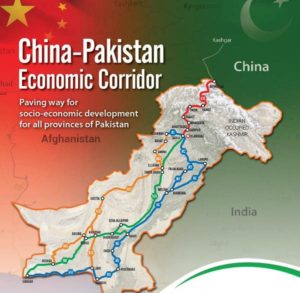by Qura Tul Ain Hafeez 16/3/2018
Economic Expansion, high prices, and inflation are the issues on which one can talk for hours. The scarcity of resources, energy crises and lack of industrial modernization are the challenges which Pakistan has been facing for past many decades. Despite the advantages of geographical setting, the country could not sufficiently expand its economy until the 20th century. However, the China-Pakistan Economic Corridor (CPEC) has brought with it various infrastructural, energy, and industrial projects that show smooth progress in these sectors. One of the most significant developments is the establishment of Special Economic Zones (SEZs) under the Long Term Plan (LTP) of CPEC. SEZ is a physically protected area with definite geographic boundaries under which the investors and the developers enjoy duty-free benefits and streamlined procedures, set up by the government. After the successful completion of the Early Harvest Program (EHP), the governments of China and Pakistan aspire to complete the Long Term Plan (LTP) of CPEC. As a key route to success, the LTP has been divided into three phases, and the work on the first phase has already started. SEZs are on the priority list of the first Phase of LTP. While utilizing the strategic location of Pakistan and the rich resources, the SEZ will contribute a framework for Pakistan’s domestic industries and local economy.
The government has planned to establish nine Special Economic Zones (SEZs) in all the four provinces, federal areas, and Gilgit-Baltistan under the framework of CPEC, which would be completed in three years. Pakistan has conducted feasibilities of 5 SEZs which focuses only on the infrastructure. The three prioritized SEZs to be completed in the first phase of LTP are M3 Industrial City in Faisalabad, Punjab, Chinese SEZ Dhabeji, Sindh and Hattar SEZ in KP province. While the remaining six sites include Rashakai Economic Zone, M-1 Noshera, Bostan Industrial Zone District Pishin, Allama Iqbal Industrial City, Moqpondass SEZ in Gilgit-Baltistan, ICT Model Industrial Zone Islamabad, Development of Industrial Park on Pakistan Steel Mills Land at Port Qasim near Karachi, Special Economic Zone at Mirpur AJK, Mohmand Marble city.
Although, there are general misunderstandings regarding the industrial ramifications of the SEZ’s under CPEC due to a large number of Chinese firms and the exemption in the tax rates offered to them. However, the LTP of CPEC shows that these SEZ’s will offer the country with a great opportunity to accelerate industrialization because they are beneficial for all the international and domestic investors. So far in the history, SEZs have been the reason of economic boost in countries around the globe. Now, this is a matter of concern that either these SEZs will make Pakistan a center of economic modernization and trade ventures or not. The economist and financial experts are optimistic about Pakistan’s emergence as one of the fast-growing and promising global economy.
While stepping towards the era of industrialization, Pakistan faces some issues that have so far refrain the industries to understand their growth potential. Some of the chief hindrances to investment in Pakistan include poor security; non-availability of infrastructure and power crises, rent-seeking regulators, and cumbersome tax administration, etc. among many others.
Likewise, the entrepreneurs in Pakistan have a certain reservation with the incentives proposed by the government and SEZs for the investors and enterprises including ten-year exemption from all taxes on imported capital goods and exemption from tax on income accruable from development and operations in SEZs for ten years. Although these incentives will be beneficial for the foreign investors at large at the same time, it will provide Pakistani enterprises with the opportunity to collaborate with the Chinese firms and launch joint ventures of mutual interests and benefits. This will be further beneficial for the annual Gross Domestic Product (GDP) growth of Pakistan. Moreover, it will bring Foreign Direct Investment (FDI) in the country thus generating the foreign revenue.
Subsequently, it is significant to keep in mind that in Pakistan there are certain security and political factors due to which the SEZ’s may face challenges. Henceforth to conquer these challenges provincial harmony among all the provinces and mutual consensus between the public sector and private sector is needed. SEZs under CPEC will be a lifetime opportunity for Pakistani companies to work together with Chinese companies for the development of export-oriented manufacturing industries. Therefore, Pakistan should increase its products in the Chinese market and raise the ratio of its export while decreasing the trade deficit by lowering the imports.

